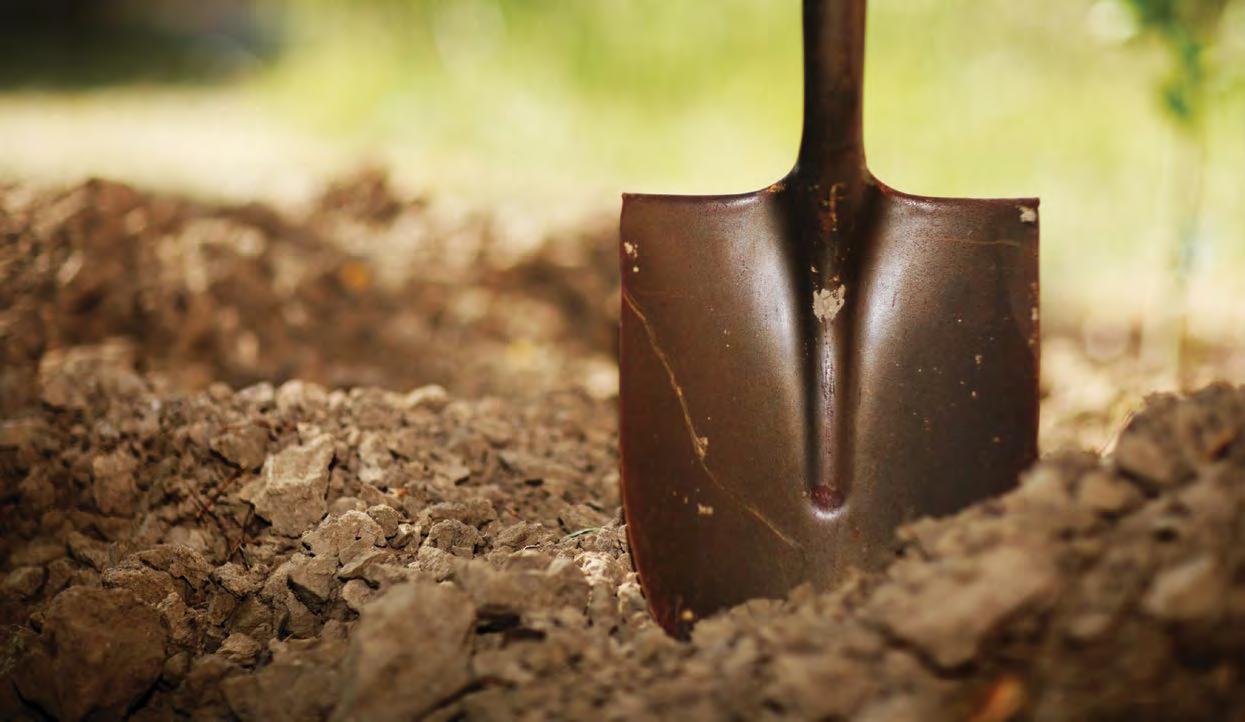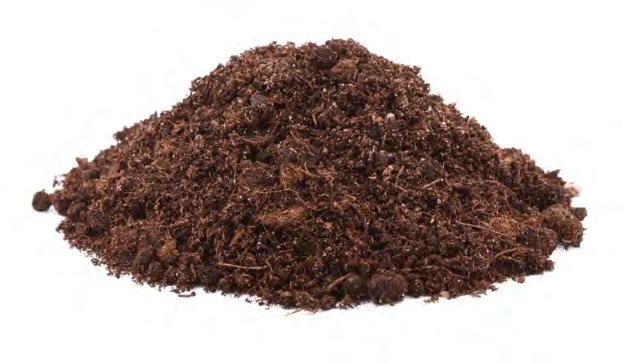
7 minute read
WE ARE NOT ALONE – The soil, microbes and human health
We are not alone
– The soil, microbes and human health
Ian Glass
LOWVELD SUGARS
The good earth
Ahealthy, diverse microbe population in our environment and within each of us is essential for our own health and future survival. In 1937 Franklin D Roosevelt, President of the United States of America during some of its darkest days of a crippling economic depression coupled with soil degradation that led to the “Dust Bowl” phenomenon, wrote that “The nation that destroys its soil destroys itself.”
These words were a stark reminder that the literal fabric of society and our very existence on this planet is facilitated by the ability of our soils to produce food for our survival. With advancements in scientific observation and understanding, more and more investigation is underway into examining the correlation between the health of these life-giving soils and our own health and well-being.
The connection between soil and human health has long been recognised, if not well understood. In 500BC, Hippocrates of Cos, the father of modern medicine, wrote: “When a physician comes to a district previously unknown to him, he should consider ... the soil; whether it be bare and waterless or thickly covered with vegetation and well watered; whether in a hollow and stifling, or exposed and cold.”
Likewise, we have recorded in the book of Numbers, chapter 13: “When Moses sent them to explore Canaan, he said, ‘See what the land is like and whether the people who live there are strong or weak, few or many. What kind of land do they live in? Is it good or bad? How is the soil? Is it fertile or poor? Are there trees in it or not? Do your best to bring back some of the fruit of the land.’”
Ninety-five percent of all life on earth lives in the soil, however as Leonardo Da Vinci observed: “We know more about the movement of celestial bodies than about the soil underfoot.”
The concept of “the good earth” has long been part of the human psyche. Given that almost all of the calories that humans consume come from food produced via the soil, the symbiotic relationship between fertile soil and human life is profound. However, as science began discovering microbes, their presence in the soil and the link of some (like tetanus) to human disease and infection helped create an attitude that the soil is a dangerous place and that things in the soil are trying to kill us.
This has influenced our attitudes as to how we treat this invaluable resource. It is estimated that approximately 10 million hectares are lost annually to erosion or increased salinity, while another 20 million hectares are abandoned annually due to decrease in fertility levels.
Our overuse of tillage, pesticides and fertiliser has had a huge impact on the microbial and fungal life of soil. Dead soil is more prone to erosion and water logging. Water logged soils in turn are more hospitable to anaerobic bacteria, many of which are plant pathogens. The depletion of microbes that are able to scavenge and hold nutrients has led to the need for higher artificial fertiliser inputs and greater environmental pollution.
Nitrate run-off contaminating water resources, residual chemical pollutants taken up by crops leads to human and animal consumption of toxins. Toxins include heavy metals like lead and arsenic. Both of these occur naturally in the environment, but the effects of microbes and other minerals in healthy soils form bonds that render them less or non-toxic. Nitrification from excess fertiliser, however, leaches lead out of these bonds. Arsenic is a component of common herbicides and is a contributor to many cancers and other diseases.
These and other pollutants can cause a large array of health issues. The concentrations do not need to be high in the soil but the accumulative effects can lead to toxic levels in animals and humans.
TO PAGE 16
The soil, microbes and human health
FROM PAGE 15

Soil microbes in plant and human health
The microbe world that inhabits healthy soil and plants is startlingly similar to the human digestive system. In both systems, bacteria and fungi help digest nutrients, break down toxins and ward off attacks as well as a host of other functions still being discovered. What we consume has a very marked effect on the microbes that inhabit us. Research is showing that microbes present in crops transfer into our own digestive systems, making it more complex and adapting it in accordance with our type of diet.
Poor diets, particularly those low in fibre, and negative changes in our guts have serious implications for our overall health, contributing to inflammation, immune diseases, diabetes and obesity among many others. In the same way, the types of plants in a field will dictate the types of microbes present in the soil, as some are more particular to a certain plant type. Soil microbes are a key factor in determining the nutrient content of our food. Taste is an indicator of nutrient density. Microbes make nutrients more readily available to plants as well as boosting the plant’s immunity and assisting in combatting pathogenic attack.
Humans require 20 amino acids to function. Of these, only 11 are manufactured in the body. The remaining 9 as well as all 13 essential vitamins come from plant or animal sources. Some of these, like Vitamin B12, are only produced via the action of microbes. In addition, microbes also produce an array of natural products that act as antibiotics and anti-inflammatories. Many of our commercial pharmaceutics are synthetic versions of these products.
Impact of farming activities
We are in a degenerative downward spiral. Pesticides and remedies are often as toxic to beneficial microbes as they are to their target. The more chemicals we use to produce crops, the more we damage the soils and organisms required for production, forcing a greater use of chemicals for a successful crop. Increasingly, toxins find their way into our food, poisoning us too in the process. This is a sure path to a bankrupt farming future and impoverished human health. • Our modern monoculture model is a concern. A variety of microorganisms working in harmony will provide the greatest benefit to the plant. However, a single plant species does not provide the necessary environment for the stimulation of a variety of microbes. • The use of harsh toxins is also detrimental to a healthy microbial population. • Leaving the soil bare removes any reason for microbe development and allows for increased soil degradation and desertification. • Overworking the soil is particularly detrimental to microbes. Tillage breaks up the fungal networks, exposes microbes to harmful UV light, damages the soil structure built by microbes and accelerates erosion.
Restorative steps
• Holistic decision-making needs to take into account the whole farm and human environment. Nature operates as a whole. Too often, we make knee jerk reactions. There is a pest, kill it. Rather than questioning what may have prompted this pest’s emergence and what are the long-term consequences of our interventions. • The inclusion of animal herds into the farming system if possible is extremely beneficial. They process the cover crop and inoculate the soil with microbe rich manure. • Building organic matter in the soil as much as possible.
Slash or roller crimp the cover crop in time to allow breakdown before light tillage incorporation. Never burn the cover crop. This deprives the soil of the nutrients taken up to produce the cover crop while releasing all of the carbon into the atmosphere. • The less tillage of the soil, the better. This seems particularly difficult in industrial agriculture but is an important factor in improving soil life. Ploughing is particularly destructive.
Remember, nature does not like bare soil. • A mix of plant types provides the most benefit. Encourage cover crops in orchards. Mix plantings or crop rotations of a variety of crops or cover crops, even natural grasses or other fodder crops. Fodder crops can then be used as grazing or baled and sold. • Wise choice in the selection of fertiliser products. Not all chemical fertilisers are equal. High chlorine based fertilisers such as potassium chloride will act as a sterilant to soil microbes. The chelation of fertiliser with humic or fulvic acid will make it less harmful to soil microbes and more effective.
Our soils already contain microbe populations in varying ratios. Making the environment more hospitable will allow them to multiply and find their balance. The objective is a healthy mix of the myriad of organisms that make soil healthy. Inoculating the soil with small amounts of high quality compost can encourage the entire microbiome to flourish. This will go a long way to stimulate healthy crops to feed healthy humans.
For instructions on making your own bio-reactor compost and its use, visit: https://www.csuchico.edu/regenerativeagriculture/bioreactor/ bioreactor-instructions.shtml
References
BEHAR, M. 2020. Soil health means better human health. Successful Farming. Published 7/15/2020. https://www.agriculture.com/crops/soil-health/ soil-health-means-better-human-health BREVIK, E.C., SLAUGHTER, L., SINGH, B.R., STEFFAN, J.J., COLLIER, D., BARNHART, P. & PEREIRA, P. 2020. Soil and human health: current status and future needs. Air, Soil and Water Res. 13: 1-23. doi: 10.1177/1178622120934441. STEFFAN, J.J., BREVIK, E.C., BURGESS, L.C. & CERDÀ, A. 2018. The effect of soil on human health: an overview. Eur. J. Soil Sci. 69(1): 159-171. doi:10.1111/ejss.12451.










